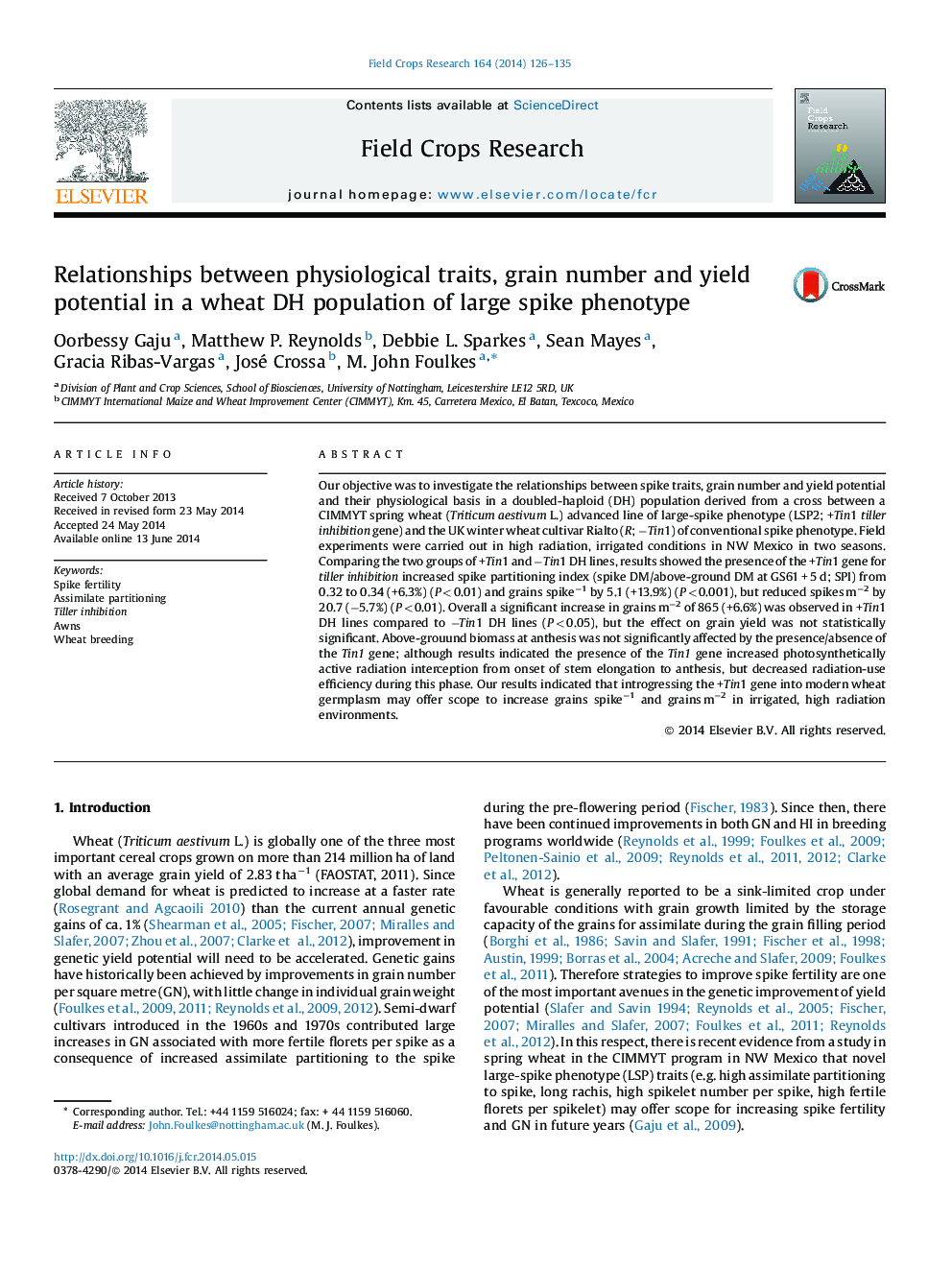| کد مقاله | کد نشریه | سال انتشار | مقاله انگلیسی | نسخه تمام متن |
|---|---|---|---|---|
| 4510093 | 1624699 | 2014 | 10 صفحه PDF | دانلود رایگان |

• We showed the Tin1 tiller inhibition gene decreased spikes m−2 (−6.0%) but increased grain spike−1 (+6.6%) at commercial plant densities in a wheat DH population in irrigated conditions.
• We showed the Tin1 gene increased grains m−2 (+6.6%) in a wheat DH population in irrigated conditions, although there was a neutral effect of Tin1 on grain yield.
• We demonstrated the Tin1 gene increased grains m−2 by increasing spike DM partitioning (+14.0%) and spike DM per unit area (+17.9%) (P < 0.01).
• We demonstrated variation above large-spike-phenotype parent (LSP2) for grains m−2 and grain spike−1 and spike partitioning index in lines of the LSP2 × Rialto DH population.
Our objective was to investigate the relationships between spike traits, grain number and yield potential and their physiological basis in a doubled-haploid (DH) population derived from a cross between a CIMMYT spring wheat (Triticum aestivum L.) advanced line of large-spike phenotype (LSP2; +Tin1 tiller inhibition gene) and the UK winter wheat cultivar Rialto (R; −Tin1) of conventional spike phenotype. Field experiments were carried out in high radiation, irrigated conditions in NW Mexico in two seasons. Comparing the two groups of +Tin1 and −Tin1 DH lines, results showed the presence of the +Tin1 gene for tiller inhibition increased spike partitioning index (spike DM/above-ground DM at GS61 + 5 d; SPI) from 0.32 to 0.34 (+6.3%) (P < 0.01) and grains spike−1 by 5.1 (+13.9%) (P < 0.001), but reduced spikes m−2 by 20.7 (−5.7%) (P < 0.01). Overall a significant increase in grains m−2 of 865 (+6.6%) was observed in +Tin1 DH lines compared to −Tin1 DH lines (P < 0.05), but the effect on grain yield was not statistically significant. Above-grouund biomass at anthesis was not significantly affected by the presence/absence of the Tin1 gene; although results indicated the presence of the Tin1 gene increased photosynthetically active radiation interception from onset of stem elongation to anthesis, but decreased radiation-use efficiency during this phase. Our results indicated that introgressing the +Tin1 gene into modern wheat germplasm may offer scope to increase grains spike−1 and grains m−2 in irrigated, high radiation environments.
Journal: Field Crops Research - Volume 164, 1 August 2014, Pages 126–135